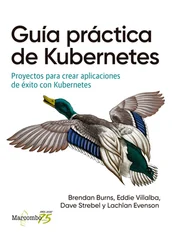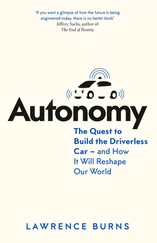This story is going to start with Chris Urmson.
I
Chapter One
DARPA’S GRAND CHALLENGE
An engineer is someone who likes to work with numbers but doesn’t have the personality to be an accountant.
—UNKNOWN
Over the last fifteen years of development on autonomous vehicles, if there is one figure who has been there, on the ground, getting his palms filthy with engine grease, breathing carbon monoxide exhaust and burning himself with electronic solder to solve each little problem as it comes up, it is Chris Urmson. The technical lead of the Carnegie Mellon University teams that competed in the three robot-car challenges staged by DARPA, Urmson’s also the figure anointed as leader by the founder of Google’s Chauffeur self-driving car project, Sebastian Thrun. In fact, Urmson ran day-to-day operations on the team from its founding in 2009 to shortly before the spinning out of Chauffeur from Alphabet into a stand-alone company, known as Waymo, in 2016. Finally, Urmson also played a key role in the power struggle that dominated Chauffeur for long periods of its existence.
To make this thing work, Urmson has sweated blood.
He’d be the first to admit he doesn’t have the outright incandescent charisma of some of the other figures in this story. Urmson is smart, sure. He refined his willingness to consider every possible solution to a problem, no matter how outlandish, in the creative-thinking challenges that dominated the Canadian educational system’s classes for gifted learners. What Urmson lacks is the bumblebee attention span of some of his self-driving colleagues. Perhaps this is because of the milieu in which he was raised. The oldest son of a prison warden and his nurse wife, Urmson grew up in small Canadian cities—Trenton, in eastern Ontario, where the biggest employer is a military base. Victoria, the seat of the British Columbia provincial government. The not-exactly-bustling metropolis of Winnipeg, Manitoba. His dad was rising through the ranks of the northern nation’s correctional services bureaucracy, eventually running not just one prison, but a whole area of them, until the family settled in the sleepiest city of them all—Saskatoon, the capital of Saskatchewan, the least assuming province in one of the least assuming countries of the world.
Urmson grew up among people who viewed with suspicion those who drew attention to themselves. What the guy is, is solid. Straight-shooting. Steady. Urmson is not the guy you’re going to notice first when you walk into a room. But you spend enough time with the people in that room, and I don’t care who is in there, after a while Urmson will be the guy you trust to lead—to carry out the plan.
And in April 2003, Chris Urmson had a plan. In fact, Urmson thought he had the next couple of years of his life pretty well figured out as he drove from the remote Chilean city of Iquique to the great salt plains of the Atacama Desert. The road from Iquique into the Atacama would make anyone nervous. It zigs and zags from the Pacific Ocean on up a near-vertical shelf. Those who remember plate tectonics from high school geology might recall that this is where the Pacific’s Nazca Plate collides with South America, pushing the continent into the air, creating a ridge thousands of feet high and a rain shadow that runs six hundred miles up and down the Chilean coast. That rain shadow is the Atacama. One of Earth’s most forbidding landscapes, the driest nonpolar desert on the planet, an area so desolate that scientists use it as a stand-in for Mars. That was what Urmson was doing there. He was one of a handful of roboticists joining a team of NASA staff members to test a robot designed to crawl across the Martian landscape to seek out signs of life.
At twenty-seven, Urmson was tall and athletically built, with sandy blond hair and smiling blue eyes behind round, wire-framed spectacles. He tended to jam a baseball hat so low over his brow that the brim would touch the top of his glasses. Urmson planned to spend about a month in the Atacama. Then he’d return to Pittsburgh, where he was a graduate student in the robotics program at Carnegie Mellon University. He’d write up his dissertation, undergo the grilling every thesis committee is supposed to do, hopefully get his PhD and then a job—maybe join the faculty of his alma mater’s Robotics Institute, home to more robotics brainpower than anywhere on earth, or maybe join one of the start-ups that occasionally spun out of the university. In any event, he’d start making money, enough for him and his wife to have the kids they’d been putting off while Urmson finished his studies.
The campsite that Urmson’s research group chose amounted to little more than a handful of bright yellow dome tents, a slightly bigger meeting tent—where they kept the computers—and a pickup. And Hyperion. Hyperion was the robot. Not the conventional kind of robot. No arms and legs. Rather, Hyperion sat on a quartet of bike tires and was roofed with solar panels and powered with an electric motor. Hyperion was the reason why Urmson, and his fellow scientists from Carnegie Mellon and NASA’s Ames Research Center, had traveled over half the planet.
Hyperion was designed to wander across the Martian surface, sniffing and scraping and testing the soil for signs of life. Urmson was in charge of programming the software that dictated how fast Hyperion rolled.
The scientists took their breakfasts and dinners at a nearby salt mine. Nights, they sat around a fire and watched the camanchacas roll in, the Pacific salt fog that could rust exposed metal within a single night. They turned in to tents they used for warmth rather than protection. You camp in other deserts, you need a tent to keep snakes out of your sleeping bag and scorpions out of your boots. But nothing lived in the Atacama Desert. Not snakes. Not scorpions. The only living things that Hyperion’s minders saw were vultures.
The encounter that would change Urmson’s life started with the sight of a long dust cloud led by a speeding pickup. Some minutes later, the dust cloud followed the pickup into the Hyperion campsite. The door opened, and out of the truck popped William L. Whittaker, commonly referred to as Red.
Whittaker was another big guy, an inch or two taller than Urmson at about six-foot-three, with shoulders that look like they’d brush the sides of interior door openings. His scalp is closely shorn; years ago, when he did have hair, the color of it was what gave him his nickname. His gaze is intelligent and contemplative. It feels like his eyes can see right into your soul when he looks at you. Anyone who spends five minutes with Whittaker can tell that he spent formative years in the U.S. Marine Corps. He speaks in the sort of aphorisms that drill sergeants put on their bedroom walls. “Winning isn’t everything,” he might say. “It’s the only thing.” And: “Worry is a formula for failure.” Another favorite: “If you haven’t done everything , you haven’t done a thing.” Hyperion was somewhere around the sixty-fifth robot Whittaker had worked on in his career as a roboticist.
The Carnegie Mellon professor strode out of the pickup in boots, conducting a round of handshakes with his big hands. He was there in part because he was Urmson’s thesis adviser, and he was checking on his charge. But you could tell that Whittaker was holding something in. Something big. Pretty soon, Whittaker came out with it. The U.S. Department of Defense was staging a driving race for robots. Specifically, the Defense Advanced Research Projects Agency. DARPA, Urmson knew, was the U.S. government’s developmental laboratory, credited with spurring such useful inventions as drone technology and the Internet (a military invention whose distributed knowledge network was intended to safeguard the records of the U.S. government in the event of a nuclear attack). DARPA was also responsible for such less-than-useful innovations as mechanical lobsters for the U.S. Navy and DNA-editing techniques intended to create humans who didn’t need sleep. Now DARPA Director Tony Tether was turning the agency’s direction toward autonomous cars.
Читать дальше












